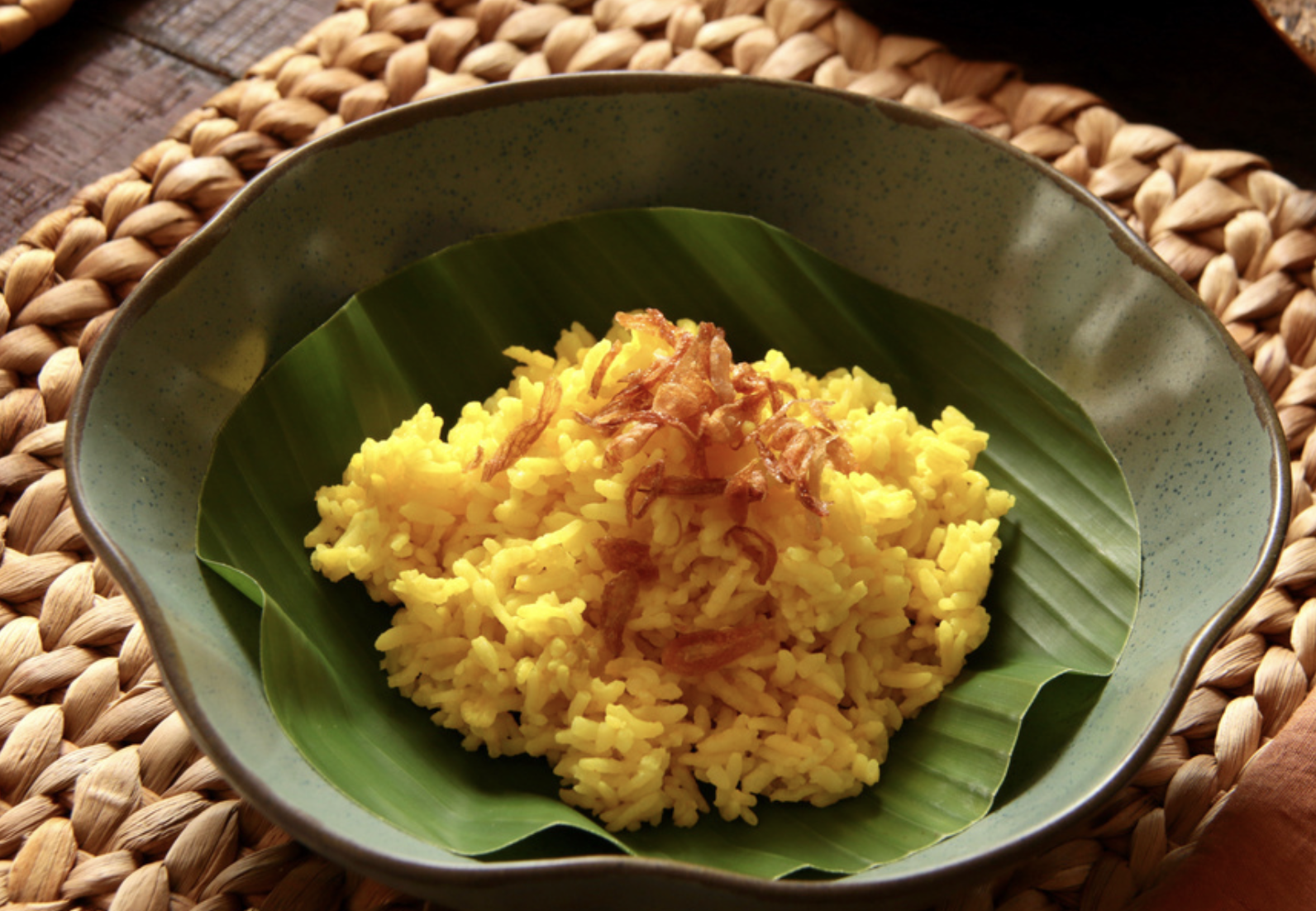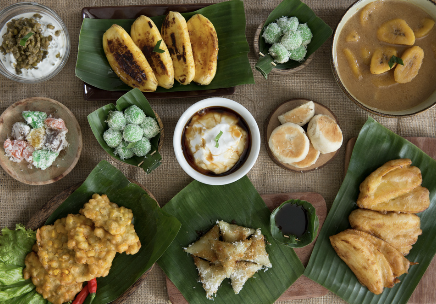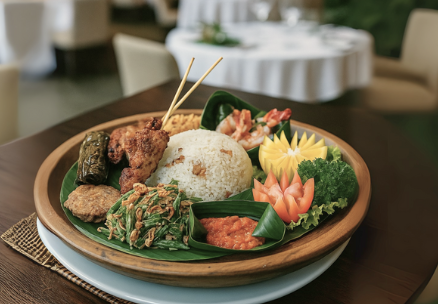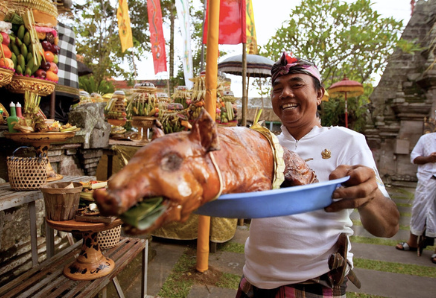In Bali, food carries meaning far beyond the dining table. Each day begins with offerings of rice, flowers, and fruit placed in small palm-leaf trays ( called yadnya sesa or mesaiban or ngejot ), reminding us that nourishment is first a gift to the gods. This sacred connection between food and spirituality shapes the island’s culinary identity. At the same time, Bali is becoming a global trendsetter for sustainable dining, where village kitchens, rice terraces, and eco-conscious restaurants all tell stories of balance. BBTF 2026 embraces this duality – sacred and sustainable – as part of its gastronomy theme, inviting buyers to design experiences and explore flavours that nourish both people and planet from Bali.
Balinese cuisine is inseparable from ritual. At temple festivals, whole villages prepare dishes like babi guling (spit-roast pig) or lawar, a mix of vegetables, coconut, and local spices, made together as an act of community. Food is never just eaten – it is shared, blessed, and connected to the cycles of life. The philosophy of Tri Hita Karana, which emphasizes harmony between people, nature, and the divine, runs through every kitchen and field.
This philosophy also shapes the island’s farming. The subak irrigation system, a UNESCO World Heritage site, isn’t just about water – it’s about cooperation. Farmers manage resources collectively, ensuring that rice cultivation sustains both livelihoods and rituals. For travellers, joining a farmer in the subak fields is more than a photo opportunity; it is a lesson in how food, faith, and ecology are interwoven.
Bali is also evolving into a culinary hub where tradition meets innovation. In Ubud, chefs reinterpret heritage recipes with a global touch – serving “base genep” spice blends in modern tasting menus or pairing tuak or arak with contemporary cocktails. In Seminyak and Canggu, wellness cafés reinvent jamu tonics with organic twists, attracting health-conscious visitors while still honoring ancient recipes.
For the travel trade, Bali’s flavours offer endless possibilities. Buyers can curate journeys where travellers join morning offerings, cook with local families, taste heritage dishes, then dine at fusion restaurants showcasing Bali’s modern creativity. These experiences position Bali not only as a cultural destination, but as a leader in sustainable, meaningful gastronomy tourism.”Bali’s flavours are sacred and sustainable, rooted in tradition yet open to innovation. BBTF 2026 bridges these stories with the global market.” Explore authentic gastronomy with ASITA Bali Region.






